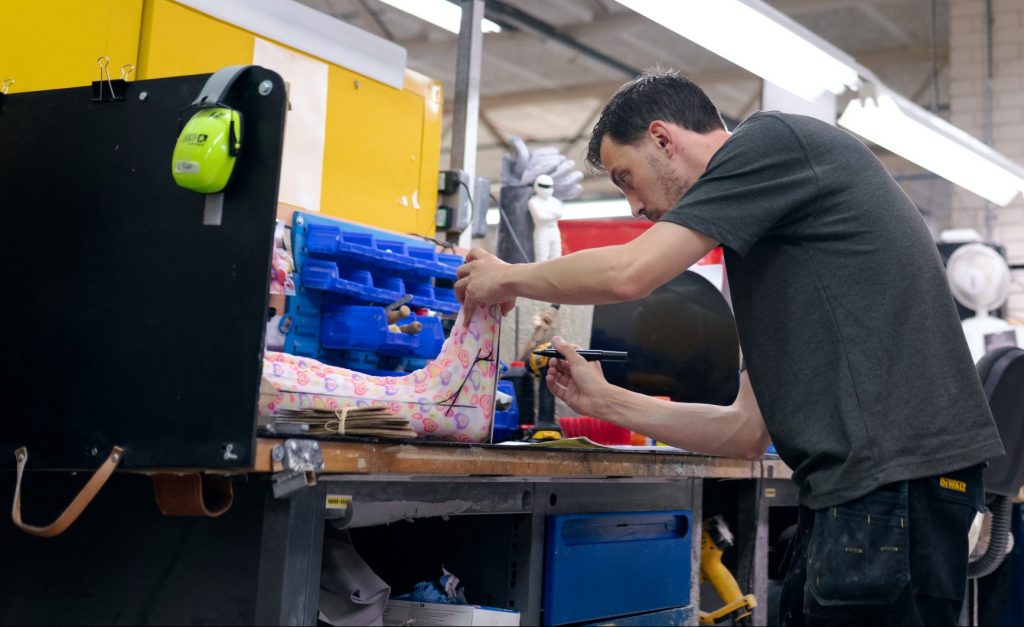 The coronavirus pandemic has transformed our world virtually overnight. Companies have had to change on a dime how they operate and communicate. While this is an incredibly serious situation, it’s an opportunity for businesses to re-evaluate their approach to managing change going forward.
The coronavirus pandemic has transformed our world virtually overnight. Companies have had to change on a dime how they operate and communicate. While this is an incredibly serious situation, it’s an opportunity for businesses to re-evaluate their approach to managing change going forward.
So-called “traditional” organizations, where silos, structure, and hierarchy abound, where resistance to change is prevalent, are in for an even rougher road. Once we pass through the pandemic, there will be a major turning point. How do we become more agile, forward-thinking and proactive? How do we sustain an ability to adapt quickly and efficiently to unforeseen circumstances? We might believe this requires the ability to predict future challenges better, or improve the organization’s ability to work remotely, or even shore up supply chains. However, the real issue is the mentality of leadership.
Having worked with an extensive amount of organizations on change, leadership is inherently slow to embrace it. This isn’t odd, as it’s human nature to resist change. But when push comes to shove – when there’s a catastrophe, when urgency is at its height, when leaders have no choice in the matter – they act. While hindsight is 20/20, organizations have multiple opportunities to make simple to significant changes which can put them in a better position to weather a storm. Yet, many leaders push back, stating the change would be too disruptive, cost too much, or take too much work to implement. But now, there’s no choice in the matter.
We can do better. We can use our corporate courage to embrace change before it is foisted upon us. We can be more open to new ideas and forward-thinking behaviors. We can foster inclusiveness, cross-train employees and empower them to make better decisions faster. We can create a resilient culture that thinks on their feet and is always looking for a smarter way to do things.
I would challenge all organizational leaders to examine their organizational culture and think about how they will transform their companies out of this pandemic to be more adaptive, rather than embracing the status quo. Because as we know, change will come one way or another – and it’s much easier to handle if you’re primed for it.
Why Behavior Is Everything
If the Coronavirus pandemic has taught us anything, it’s that behavior is everything. The impact of the stay-at-home policies shows in the decline in new cases. But like a virus, behavior within organizations can be healthy or detrimental. Not only for individuals but for the success of the organization itself. Many companies emphasize their focus on strategy, financials, or even products over organizational behavior. However, the behavior is actually the key to success in those areas. Here’s why.
All businesses are made up of people. There’s no getting around it. And no matter what your strategy, plan or product, you need people to develop and execute it.
People aren’t robots. While we may believe that people simply do what they’re told for a paycheck, it’s never that simple. People have good days, bad days, productive days and unproductive days.
Your job as a leader is not to create plans, but to lead and motivate people to accomplish an objective. Too many leaders spend an inordinate amount of time on planning, almost down to the letter, and then “hand-off” the plan to the team to execute. If your team isn’t bought into the objective and understands their role and impact on it, they’ll struggle to execute.
When people are all working towards a common objective in a uniform and aligned way, stuff gets done. We all know the challenge of trying to push an initiative forward when internally the organization or leadership thwarts forward progress (intentionally or unintentionally). Two steps forward, one step back. As a leader, it’s your job to clear the way – of obstacles, politics, and BS.
 Stuff gets done faster, cheaper and more effectively when everyone’s truly aligned. Think about your organizational objectives. Are they overarching and apply to everyone in the organization? Or are they selective and narrow? Organizational alignment and ensuring the team are all moving in the same direction gets you more resources and momentum. Just like social distancing, if not everyone is fully participating, it just draws out the time, cost, pain, and negative outcomes.
Stuff gets done faster, cheaper and more effectively when everyone’s truly aligned. Think about your organizational objectives. Are they overarching and apply to everyone in the organization? Or are they selective and narrow? Organizational alignment and ensuring the team are all moving in the same direction gets you more resources and momentum. Just like social distancing, if not everyone is fully participating, it just draws out the time, cost, pain, and negative outcomes.
It’s not about stating the objective but empowering and helping teams to do so. While the United States recently stated a 30-day social distancing guideline, they also stated the why and the how. This is what you also need to articulate with your teams when establishing an objective – the why and the how.
As we reflect on this pandemic, we need to consider how it sets the example for how we lead and drive our organizations. It’s clear that no matter what the strategy or plan, or how good that plan is, it means little to nothing when the “team” doesn’t or can’t execute it. Following the COVID outbreak, it’s an opportunity for organizations to re-examine how they address the coupling of strategy and culture – and how a stronger and more effective focus on team alignment will ensure your organizational objectives actually get achieved.





















